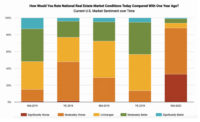FMI says that construction put in place at the end of 2013 is expected to be at $909.6 billion. FMI researchers further predict CPIP growth rates to be slightly ahead of the GDP in 2014. Those predictions are included in the recent release of the firm’s “2014 U.S. Markets Construction Overview.” FMI is a provider of management consulting and investment banking information to the engineering and construction industry.
Other predictions in the overview include:
• Residential CPIP is anticipated to grow from $338.2 billion in 2013 to $379.6 billion in 2014.
• Health care CPIP is expected to grow 6% in 2014 to $44 billion.
• Transportation construction should finish 2013 with an 8% increase; 2014 predictions show a decrease to 7% growth.
• Manufacturing construction is on the upturn, expected to grow 4% in 2014, after its 2% drop in 2013.
• Sewage and waste CPIP should reach $21.3 billion in 2014.
With moderate growth predicted marketwide, there are key trends to watch that will likely affect various sectors and regions in the U.S.
Presenting both threats and opportunities are:
• The shift from shale-gas to shale-oil production, which has led to projections that the U.S. will produce more oil than it imports by late 2014.
• The federal government’s fiscal difficulties, which continue to create business uncertainty. Many analysts are worried about the federal debt and the government’s solution to address the problem.
• Implementation of the Affordable Health Act, which causes concern, as more repercussions are anticipated.
• With baby boomers continuing to retire, succession planning and a search for talent remains one of the industry’s primary challenges.
• Modularization and prefabrication is expected to play an increasingly vital role in improving the productivity of the entire construction value chain.
As a result of the expansion of the Panama Canal, U.S. coastal infrastructure opportunities will create significant corridors of construction activity starting as early as 2014, FMI says.


Post a comment to this article
Report Abusive Comment